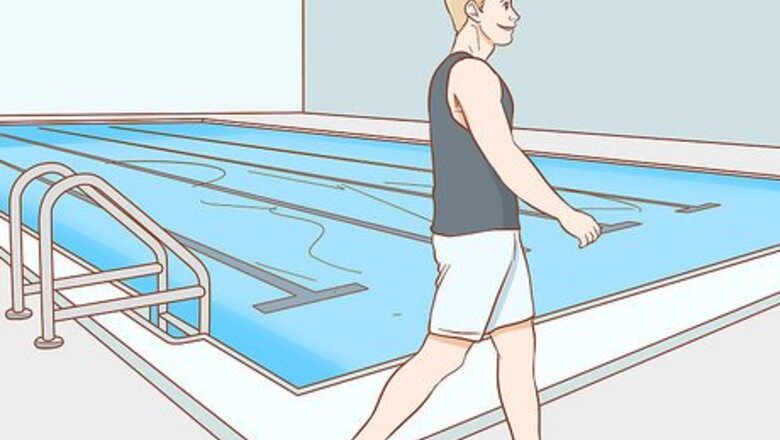
views
Following the Rules of Conduct
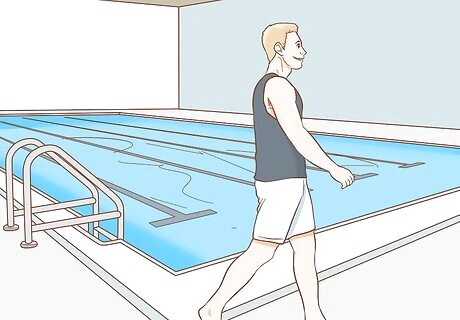
Walk along the sides of the pool instead of running. It can be tempting to run around the sides of the pool, but it's very dangerous to do so. You could easily slip on the wet tiles and bang your head off the floor or side of the pool. Always walk in a calm, measured manner for maximum safety.

Follow the lifeguard's orders. Treat the lifeguard as the number 1 authority on what you can and can't do when at the pool. The lifeguard is well experienced in looking after people and making sure they don't hurt themselves when they're at the pool. Listen to what the lifeguard says at all times. The lifeguard is allowed to remove you from the swimming pool if you don't listen to what they say.

Wear a swim cap. The pool's filter system can easily become clogged by all of the loose hair that floats into it and bundles together. Buy a swim cap at the front desk of the swimming pool. Make sure you keep it on while you're in the pool. If you have long hair, tie it up and pull the cap over it.
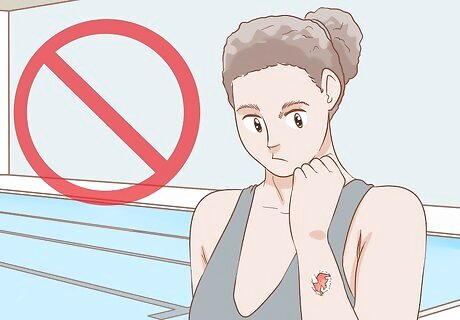
Avoid the pool if you have an open wound or warts. Public pools can be breeding grounds for infections because of the amount of people that use them without thinking of their fellow swimmers. If you have a large open wound, consider waiting until it heals before going to the pool. If you have warts on your feet, you can buy special swim socks. These socks will make it impossible for your warts to spread to other swimmers.
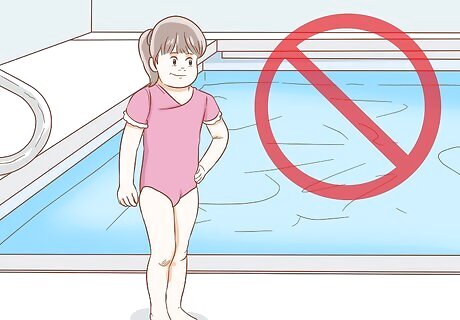
Avoid letting children swim in the deep end without supervision. If you bring children to the swimming pool, keep an eye on them the entire time. Children like to explore and will enter the deep end without thinking. You can always stay in the deep end with your child if they want to try to swim there. If your child isn't a strong swimmer, make them wear armbands while they're in the water.
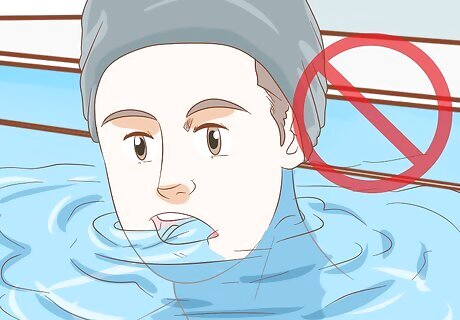
Avoid swallowing the pool water. While pool water is filtered constantly, it's still not safe to drink. Some people mightn't wash very often and others might be ill. The water will have to enter your mouth at some point, just don't swallow it. Don't swim in discolored, slimy, or cloudy water.
Using Basic Swimming Techniques
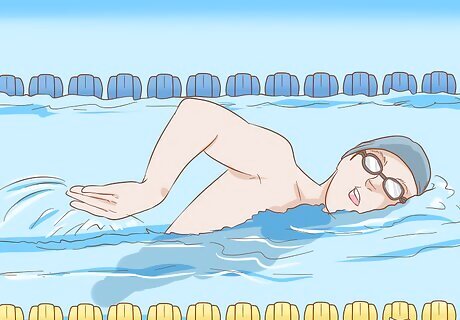
Perform the front crawl if you're going for speed. Keep your body as flat as possible in the water and face your head and eyes forward and down. Use your legs to paddle as quickly as possible to stay floating. Stretch forward with your hand and slice through the water. Move your hips and shoulders to generate extra movement and speed. To find the right speed you should be swimming at, count to 6 quickly and try and paddle your legs in tempo with your counting. Remember to breathe in whenever you feel like it. Only rotate your head when you need to breathe. Breathe from one side of your mouth as half your face should still be in the water when you rotate your head to breathe.
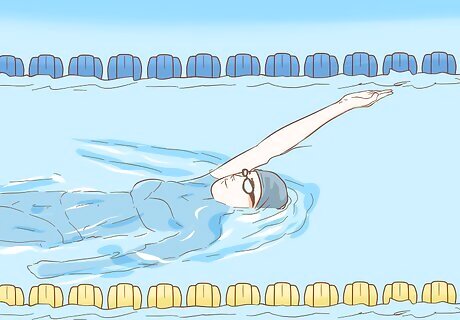
Do the backstroke for a leisurely swim. Make sure your body is as flat as possible as you lie in the water. Keep your head and neck relaxed. Focus on your shoulder as you raise your arm out of the water. Rotate your arm through the water and turn your palm to face your feet. Then flex your arm and push through the water. Kick from your hips and keep your legs close together. Breathe in when each arm finishes a full movement. Use your breath to judge the tempo of your stroke.
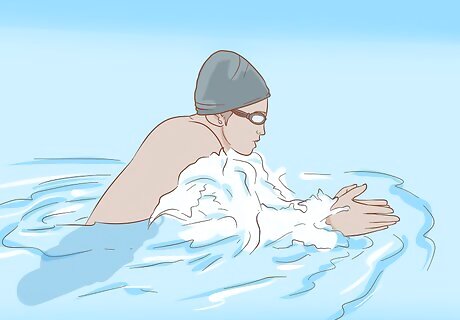
Swim with the breaststroke if you want a calm swim. When performing the breaststroke, keeping your body level is vital to ensure efficient usage of energy and to ensure that you keep your balance. Relax your neck and shoulders as much as you can. Point your arms forward and face your hands down and out. Bend your knees and bring your feet towards your butt. Lift 1 shoulder when you need to breathe. You should breathe whenever you feel like it's necessary. Lift your shoulder so your chin is just touching the surface of the water and breathe in. Exhale when your head is back underwater.
Trying Advanced Techniques
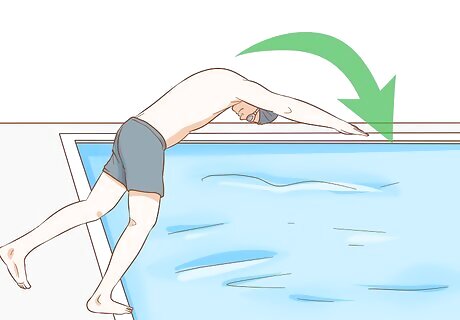
Dive into the pool. Depending on the pool, the diving boards will be set up at different heights. Stand with your feet together and your toes over the edge of the diving board. Stretch your arms above your head, with your biceps touching your ears. Slightly flex your knees, tuck your chin into your chest, and dive towards the water, hands first. Practice diving from the edge of the pool. Once you've perfected that, move up and dive from the lowest diving board.
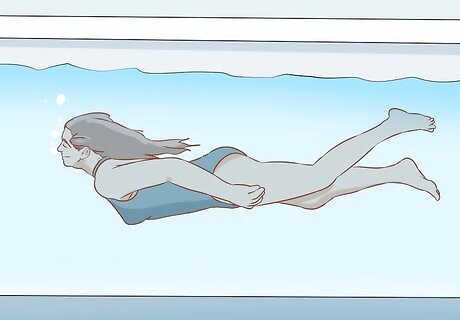
Swim to the bottom of the pool if you want to test yourself. Practice by standing upright and letting yourself sink slowly to the bottom of the pool. Before you sink, take a deep breath and breathe the air from your mouth as you move downwards. When you start to run out of air, don't panic. You need to be able to relax for a few seconds and tell your body you're not in danger. After a few seconds at the bottom, push back up to the top. Practice this technique a few times before you swim to the floor of the pool. Obviously if you're really low on air, go back to the surface as soon as you can. Have a friend watch you the first few times you swim to the bottom or practice this exercise. This will put you at ease in case anything goes wrong.
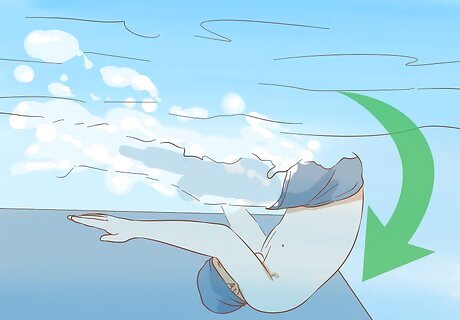
Turn at the wall to improve your skills. The turn is an effective but difficult swimming move. When you reach the end of the pool, you can kick off the wall and swim back the way you came. Put your hands on the wall and keep your body flat as you float in the water. Kick your legs if you want to. When you're ready, bring your legs in and kick the wall with the soles of your feet. As you kick, bring 1 of your elbows back and turn your shoulders. Straighten the elbow you brought back so it's level with the surface of the water. Bring your other arm in over your head. Slice into the water with your hand. Keep an eye on your hand as it passes over your head. Push away from the wall with the soles of your feet and twist your body to get back into your starting position.
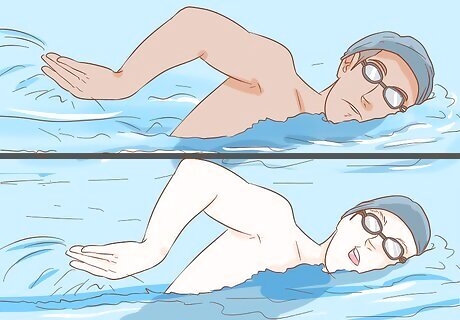
Race your friends if you want a fun challenge. A good way to enjoy swimming at the pool and to improve as a swimmer is to have a race with your friends. If your friend is a better swimmer than you are, give yourself a head start in the race. Swim in a lane each to the opposite side of the pool and back. Make sure you don't inconvenience any other swimmers when racing in the pool.


















Comments
0 comment